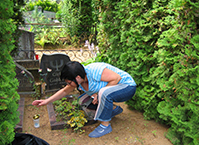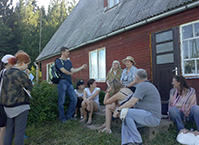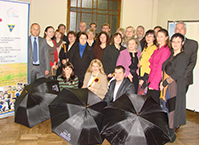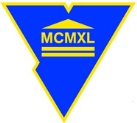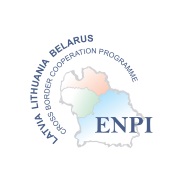About the cheese preparation
Categories: Dagnija Bramane
You’ve said that you make cheese yourself – both Jāņi cheese and other types of cheese. Could you briefly tell me how you do that?
Yes, cheese is of various kinds. There is the so-called cooked cheese. Then there is the so-called Jāņi cheese. I don’t even know how to say – milk cheese or quick cheese. You see, that cooked cheese is made not only from milk, but there are some curds made beforehand. I’d tell you how it is made if 10 litres are taken, so that it is easier to understand. You take ten litres or milk, it is heated up to the boiling temperature and then you add crumbled curds – let’s say about half a kilogram, depending on what size of cheese you want to make. Then the whole mass is mixed and it blends, then it is filtered. In our area, it is traditionally filtered through a cheesecloth. And then, when all the whey has run off, all that mass is again put into the saucepan; you add salt, caraway seeds, two or more eggs – as many as you want, you can add other flavourings as well. Then it is boiled on small fire and stirred all the time. When the cheese has shrank in a sort of a ball, then it is supposed to be ready. It is poured out of the saucepan into some dish or a mould, depending on what form you want the cheese to have, and then it is left somewhere outside in a cool place for it to cool. This is the so-called cooked cheese.
Then there is that Jāņi cheese, which is made of sour milk – similarly to curds, but instead of filtering and leaving it, it is poured into a cheesecloth and the salt is added, and then it is put under some press, when that whey is pressed out and the cheese is left salted for some days to dry. It is possible to dry it later or to toast it in the oven. You can add caraway seeds or eggs, too. This is the so-called Jāņi cheese that is made of sour milk.
Then there is the third way of making cheese – the so-called quick cheese. It is made of milk. Milk is boiled, we usually take ten litres of milk. You add a spoonful or one and a half spoon of citric acid to that milk, when it is heated. The sourness of citric acid makes a sort of mass of that milk and the cheese is separated from the whey. Citric acid may be replaced by vinegar, lemon juice or something else that is sour. And, when it is separated from the whey, it is also poured into the cheesecloth and pressed; and the cheese is ready. You can add various flavourings to this cheese, I have already said – nuts, apricots. This is, as we say, a stylish cheese with various novelties added, people add cranberries, too.
And now, while speaking, I’ve remembered one more kind of cheese, when you can make kind of processed cheese. It is made similarly to cooked cheese, but in the end, you should add a spoonful of baking soda. Then the cheese is liquid, similar to processed cheese. You can spread it on a piece of bread and eat it. Such a modern variant.
Audio
Researcher: Dr. philol. Valentīns Lukaševičs, Daugavpils Universitāte


